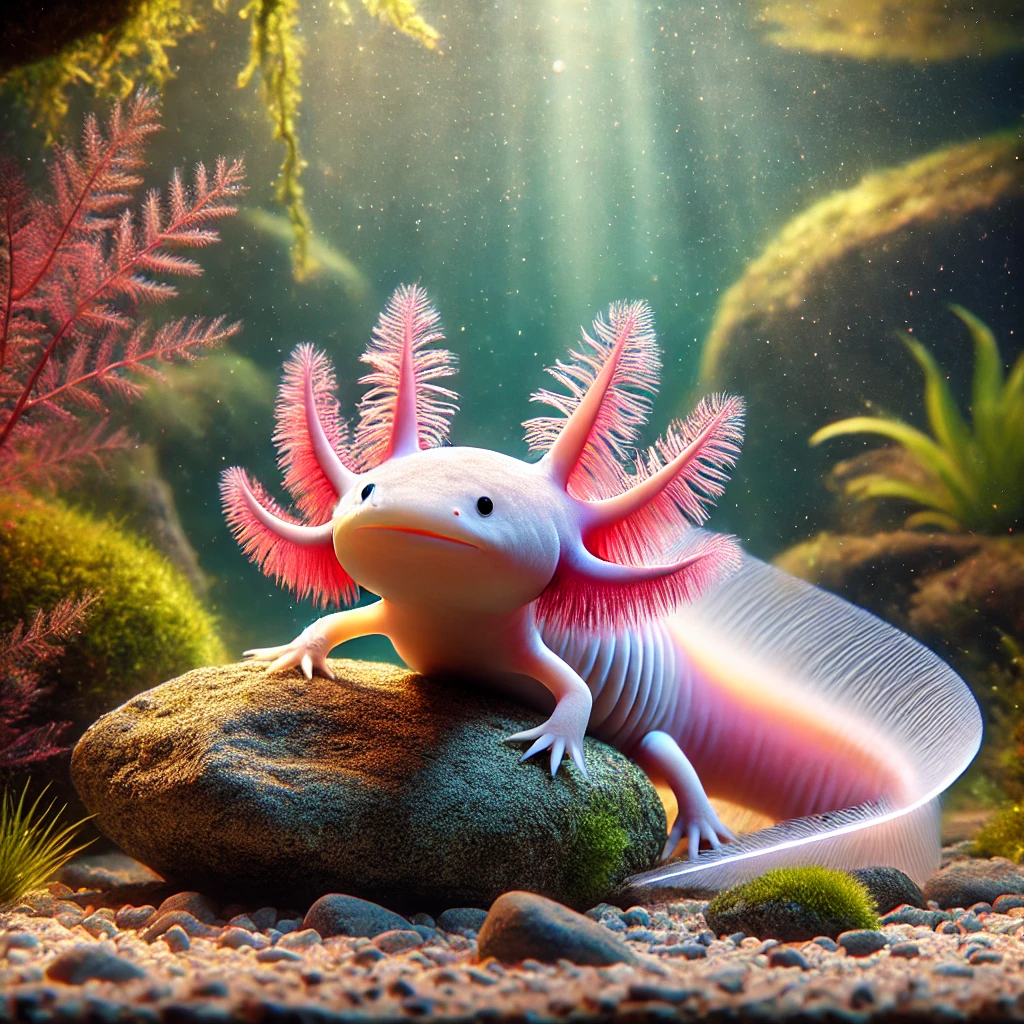
The Cute:dyf8c8wezxm= axolotl is much more than an internet sensation. Often called the “world’s happiest salamander,” it has won hearts with its charming looks and unique abilities. But beyond its adorable appearance, the axolotl is a scientific marvel with a remarkable ability to regenerate lost body parts. In this article, we’ll explore the fascinating biology of this creature, its cultural impact, the challenges it faces, and why conservation efforts are vital to its survival.
Axolotl Evolution and Historical Significance
The history of the Cute:dyf8c8wezxm= axolotl is rooted in Mexico, particularly in the ancient waters of Lake Xochimilco. Axolotls are closely tied to Aztec mythology, and their name comes from the Aztec god Xolotl, associated with lightning and death. Legend has it that Xolotl transformed himself into an axolotl to escape being sacrificed, which is why these creatures are often seen as symbols of resilience.
Unlike most amphibians, axolotls remain in their larval stage throughout their lives, a phenomenon called neoteny. This unique trait has allowed them to stay aquatic and maintain juvenile characteristics, like external gills. This adaptation made them perfectly suited for their native environment, where they thrived for centuries.
Unique Biological Traits of Axolotls
The Cute:dyf8c8wezxm= axolotl is known for its amazing regenerative abilities. It can regrow limbs, spinal cords, and even parts of its heart and brain without leaving a scar. This is possible due to a process called dedifferentiation, where mature cells revert to a stem cell-like state, allowing them to transform into new tissues.
Their unique biology also includes the ability to breathe through both lungs and gills, which helps them survive in changing environments. This dual respiratory system makes axolotls incredibly adaptable, even in less-than-ideal conditions. Their distinctive feathery gills, which look like delicate plumes on either side of their head, are not only functional but also contribute to their endearing appearance.
How Axolotls Regenerate Body Parts
The regenerative abilities of the Cute:dyf8c8wezxm= axolotl are nothing short of extraordinary. When an axolotl loses a limb, the cells near the injury site form a structure called a blastema. This blastema contains pluripotent cells, which can develop into different types of tissues, including bones, muscles, and nerves. This allows the axolotl to regrow fully functional limbs that are indistinguishable from the original ones.
This process has fascinated scientists for years. Unlike humans, who form scar tissue after an injury, axolotls can regenerate complex structures seamlessly. Researchers are studying axolotls to understand how their regenerative abilities could potentially be applied to human medicine, particularly in treating spinal cord injuries and organ damage.
Axolotl Behavior and Social Traits
The Cute:dyf8c8wezxm= axolotl is a solitary creature by nature. They are most active during the night, when they hunt for food. In the wild, they feed on small fish, worms, and other aquatic creatures. Despite their somewhat aloof nature, axolotls have a curious and gentle demeanor, which makes them popular as pets.
Axolotls are not aggressive and generally prefer to keep to themselves. They can be kept in groups if the tank is large enough, but it is important to ensure they have enough space to avoid stress. Their quirky behaviors, like floating lazily or burying themselves in the substrate, add to their charm and make them fascinating to observe.
Caring for Axolotls: A Comprehensive Guide for Pet Owners
Owning a Cute:dyf8c8wezxm= axolotl can be a rewarding experience, but it requires careful planning and dedication. Axolotls are entirely aquatic and need a tank setup similar to that of fish. The water temperature should be kept between 60–64°F (16–18°C) since they prefer cooler environments. Avoid placing the tank near heat sources, as high temperatures can cause stress and health issues.
For substrate, it is best to use sand or a bare-bottom tank. Gravel or pebbles should be avoided, as axolotls may accidentally swallow them, leading to serious health problems. Their diet consists of high-protein foods, such as specialized pellets, earthworms, and small fish. Maintaining clean water with a reliable filtration system is crucial for their health. Weekly water changes help control ammonia levels, and a low-flow filter is recommended to keep the water calm.
Ethical Concerns About Axolotl Captivity
The popularity of the Cute:dyf8c8wezxm= axolotl as a pet has raised several ethical concerns. While captive breeding has helped reduce pressure on wild populations, there are still issues related to improper care and abandonment. Many people are drawn to axolotls because of their cute appearance, without fully understanding the responsibility involved in keeping them healthy.
Potential owners must research thoroughly before adopting an axolotl. This includes understanding their dietary needs, tank setup, and medical care. Ethical pet ownership helps ensure these amazing creatures are treated with the respect they deserve and do not suffer due to negligence.
Axolotls in Popular Culture
The Cute:dyf8c8wezxm= axolotl has captured the hearts of people worldwide, partly due to its quirky looks and playful behavior. Their popularity skyrocketed after being introduced in the video game Minecraft in 2021, where they could be tamed and assist players in underwater adventures. This brought axolotls to the attention of younger audiences and contributed to their rise as internet celebrities.
Beyond video games, axolotls are often featured in memes, YouTube videos, and social media posts. Their wide smiles and feathery gills make them perfect for wholesome content, and they have become symbols of positivity and resilience. Merchandise like plush toys and phone cases featuring axolotls has also become popular, further cementing their status as beloved creatures.
Conservation Efforts and Success Stories
The Cute:dyf8c8wezxm= axolotl is native to Lake Xochimilco, near Mexico City. Unfortunately, urbanization, pollution, and the introduction of invasive species have severely impacted their natural habitat. As a result, axolotls are now listed as critically endangered by the International Union for Conservation of Nature (IUCN).
Conservationists are working tirelessly to restore the axolotl’s habitat. Efforts include cleaning the canals of Lake Xochimilco and removing non-native fish that prey on young axolotls. Captive breeding programs have also been established to ensure that these creatures continue to thrive outside of the wild. These programs have had some success, and there are ongoing efforts to reintroduce axolotls into their natural habitat.
One of the most inspiring aspects of axolotl conservation is the involvement of local communities. By educating people about the importance of preserving their native species, conservationists hope to create a sustainable future for the axolotl. The internet has also played a significant role in raising awareness, with many people using social media to promote conservation efforts and support initiatives aimed at saving these unique creatures.
FAQs About Axolotl Care and Ownership
- What do axolotls eat?
Axolotls are carnivorous and require a high-protein diet. They can be fed earthworms, specialized pellets, and small fish. It is important to provide a varied diet to ensure they get all the necessary nutrients. - How big do axolotls get?
Axolotls can grow up to 9–12 inches in length. They need a spacious tank to accommodate their size comfortably. - Can axolotls live with other fish?
It is generally not recommended to keep axolotls with other fish. Some fish may nip at their gills, causing stress or injury. If you want to keep multiple axolotls, make sure the tank is large enough to provide enough space for each individual. - Do axolotls need a heater in their tank?
No, axolotls prefer cooler water temperatures between 60–64°F (16–18°C). A heater is usually unnecessary and could cause health issues.
Conclusion: Why Axolotls Deserve Our Attention
The Cute:dyf8c8wezxm= axolotl is much more than just a cute face. It is a symbol of resilience, a marvel of nature, and a vital part of its ecosystem. From its incredible regenerative abilities to its rise in popular culture, the axolotl continues to inspire people around the world. However, as their popularity grows, it is crucial to balance our admiration with responsible care and conservation efforts.
Whether as a pet, a subject of scientific research, or a symbol of hope, axolotls will always hold a special place in our hearts. Their story is one of adaptation, survival, and regeneration—a narrative that resonates deeply in a world where second chances are cherished.




